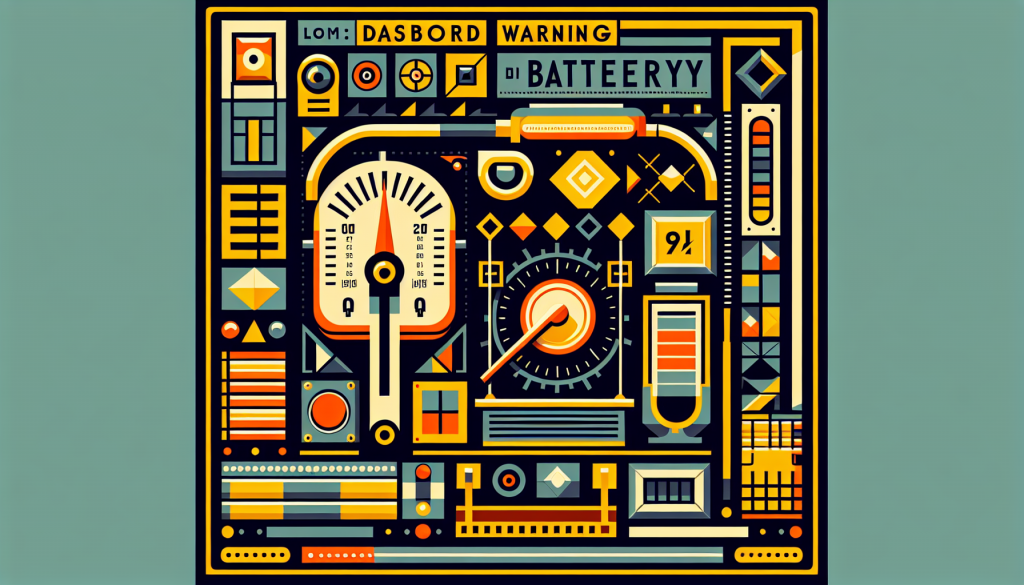What Those Dashboard Lights Really Mean
Why You Should Care About Dashboard Warning Lights
Dashboard warning lights are like your car’s way of texting you when something’s up. They let you know if there’s a minor hiccup or a major meltdown brewing under the hood. Ignoring these lights? Not a good idea. It could turn a small fix into a big, expensive headache.
Knowing what each light means can save you time and stress. For a full rundown of all the dashboard warning lights, check out our dashboard warning light guide.
Battery Warning Lights: What to Look For
Battery issues are a common reason for dashboard lights to pop on. The battery warning light usually looks like a little box with plus and minus signs, representing the battery terminals. Here’s a quick cheat sheet for some common symbols and what they mean:
| Symbol | Meaning |
|---|---|
| Your car’s charging system is acting up. This could mean the battery, alternator, or some wiring is on the fritz. | |
| The battery isn’t charging right. Maybe the alternator’s having a bad day or there’s a loose connection somewhere. | |
| This is a red flag for a serious battery issue. Get it checked out ASAP to avoid bigger problems. |
Want more details? Head over to our dashboard warning light symbols article.
Knowing why these lights come on can help you fix the problem faster. For more tips on diagnosing and fixing these issues, see our dashboard warning light diagnosis and dashboard warning light repair pages.
Real-Life Example: My Battery Light Saga
Last winter, my battery light came on during a snowstorm. I ignored it, thinking it was just the cold weather messing with the sensors. Big mistake. A week later, my car wouldn’t start, and I had to replace the battery and alternator. Lesson learned: pay attention to those lights!
So, next time a dashboard light pops on, don’t shrug it off. It could save you a lot of trouble—and money—in the long run.
Mastering Battery Problems
Causes of Battery-Related Dashboard Warning Lights
Ever had that annoying battery light pop up on your dashboard? Let’s break down why it happens and what you can do about it. Here are some common culprits:
- Old Battery: Batteries get tired over time. If yours is pushing three years or more, it might be on its last legs.
- Corroded or Loose Connections: Gunky terminals or wobbly connections can mess with your car’s electrical flow, setting off that pesky light.
- Faulty Alternator: The alternator’s job is to keep your battery charged while you drive. If it’s on the fritz, your battery won’t get the juice it needs.
- Broken Serpentine Belt: This belt powers the alternator. If it snaps, your alternator can’t do its job.
- Electrical Gremlins: Issues like short circuits in your car’s electrical system can also trigger the warning light.
| Cause | Description |
|---|---|
| Old Battery | Batteries degrade over time, especially after three years |
| Corroded or Loose Connections | Disruption in electrical flow due to corrosion or loose terminals |
| Faulty Alternator | Inefficient battery charging |
| Broken Serpentine Belt | Alternator unable to generate power |
| Electrical Gremlins | Short circuits or other faults |
Steps to Diagnose and Fix Battery-Related Dashboard Warning Light Issues
Got that battery light staring you down? Here’s a step-by-step guide to figure out what’s wrong and fix it:
-
Check Battery Connections: Pop the hood and inspect the battery terminals. If they’re crusty, clean them with a mix of baking soda and water. Tighten any loose connections.
-
Test the Battery: Grab a multimeter and check the battery voltage. A healthy battery should read about 12.6 volts when the engine’s off and between 13.7 and 14.7 volts when it’s running. If it’s lower, you might need a new battery.
-
Check the Alternator: With the engine running, use the multimeter to test the alternator’s output. It should be between 13.7 and 14.7 volts. If it’s not, your alternator might need some TLC. For more details, check out our dashboard warning light alternator guide.
-
Inspect the Serpentine Belt: Look for any signs of wear and tear on the belt. If it’s frayed, cracked, or broken, it’s time for a new one.
-
Examine the Electrical System: Check for blown fuses or any visible wiring issues. Electrical problems can be tricky, so you might need a pro. For more info, visit our dashboard warning light fuse page.
-
Reset the Warning Light: After fixing the issue, you might need to reset the warning light. You can usually do this by disconnecting the battery for a few minutes or using a diagnostic tool. For a step-by-step guide, see our article on resetting dashboard warning lights.
| Step | Action |
|---|---|
| Check Battery Connections | Clean corrosion, tighten connections |
| Test the Battery | Use a multimeter to check voltage |
| Check the Alternator | Test output with a multimeter |
| Inspect the Serpentine Belt | Look for wear and replace if necessary |
| Examine the Electrical System | Check fuses and wiring |
| Reset the Warning Light | Disconnect the battery or use a diagnostic tool |
Follow these steps, and you’ll be back on the road in no time. For more tips and detailed instructions, explore our dashboard warning light troubleshooting section.



